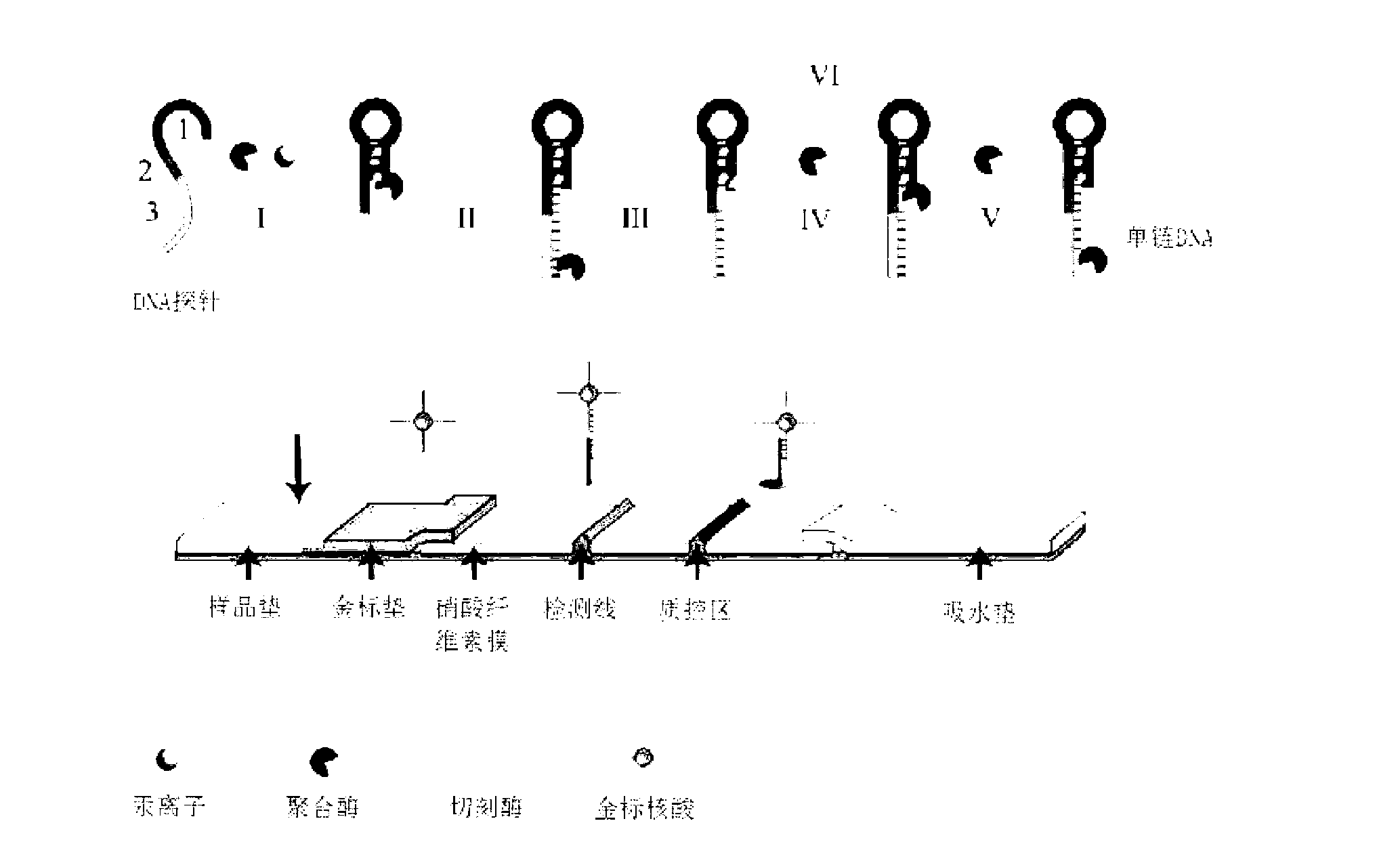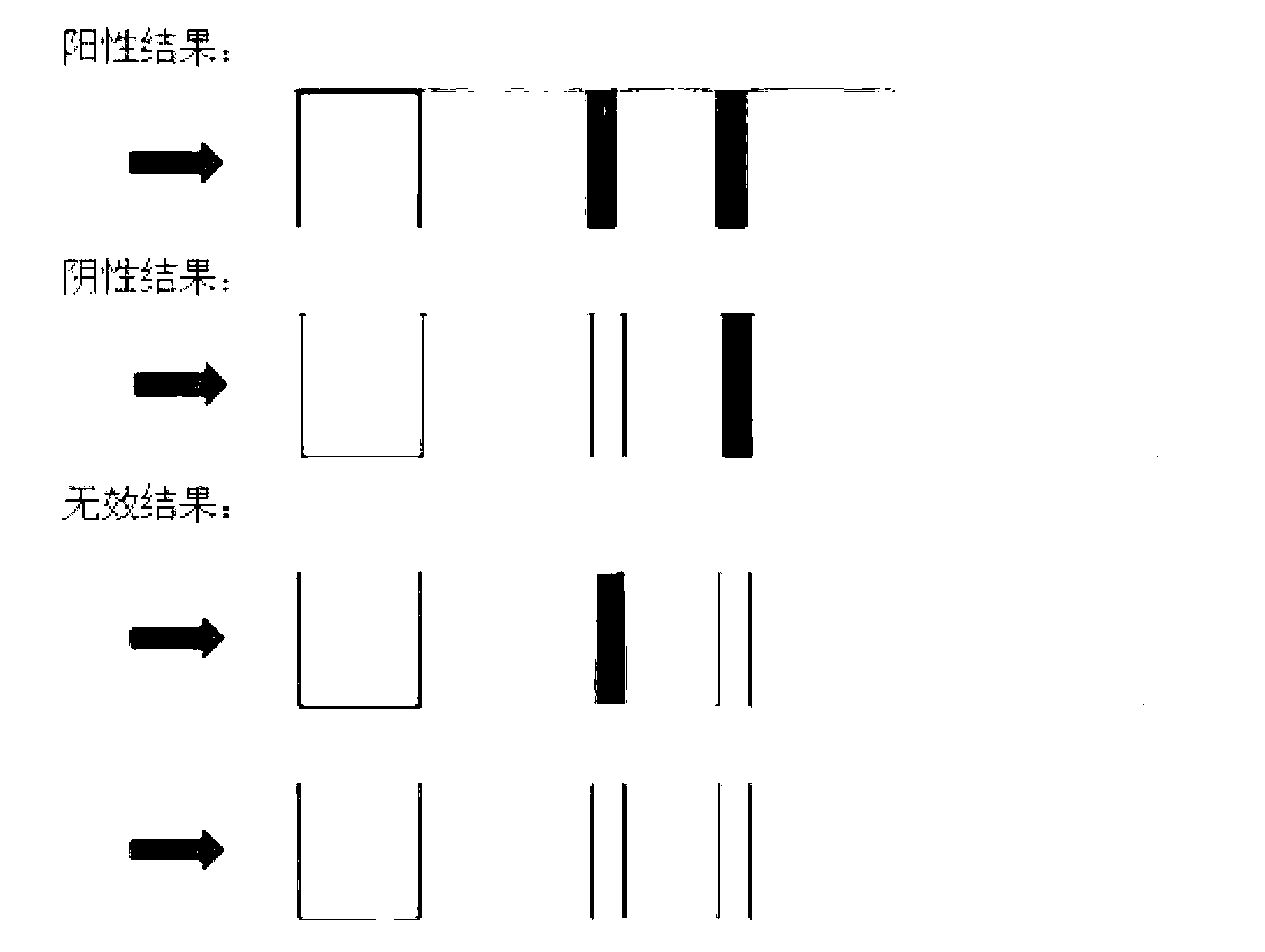Nucleic acid nano-gold biosensor for detecting mercury ions and kit
A biosensor and nucleic acid nanotechnology, applied in the field of nucleic acid nanogold biosensors, can solve the problems of expensive instruments and complicated operations, and achieve the effects of rapid detection, simple preparation, and high sensitivity
- Summary
- Abstract
- Description
- Claims
- Application Information
AI Technical Summary
Problems solved by technology
Method used
Image
Examples
Embodiment 1
[0014] Embodiment 1 Preparation of nucleic acid nano-gold biosensor and kit of the present invention
[0015] 1. Design of four nucleic acid sequences
[0016] In the 1990s, Thomas Carell discovered that the thymine base (T) in nucleic acid can specifically form T-Hg with mercury ions 2+ -T complex, the thermal stability of the complex is higher than that of the A-T base pair. The difference in melting temperature between the double strands formed by the two can reach up to 7°C.
[0017] According to this principle, the present invention has synthesized the following four nucleotide sequences through experimental screening:
[0018] The first segment is an oligonucleotide sequence specifically binding to mercury ions, which contains 64 bases, as shown in SEQ ID NO:1. It includes a segment in Hg 2+ A sequence that, when present, folds into a hairpin conformation, a nicking enzyme (eg, Nt.BbvCI) recognition sequence, and a random sequence.
[0019] SEQ ID NO:1
[0020] 5'-...
Embodiment 2
[0053] Embodiment 2: detection experiment of nucleic acid nano gold biosensor
[0054] The nucleic acid nano-gold biosensor prepared in Example 1 was used to conduct the following experiments to verify its detection effect.
[0055] 1. Prepare mercury ion standard solution gradients with concentrations of 2μM, 1μM, 0.5μM, 0.1μM, 50nM, 10nM, and 5nM, and store at room temperature.
PUM
 Login to View More
Login to View More Abstract
Description
Claims
Application Information
 Login to View More
Login to View More - R&D
- Intellectual Property
- Life Sciences
- Materials
- Tech Scout
- Unparalleled Data Quality
- Higher Quality Content
- 60% Fewer Hallucinations
Browse by: Latest US Patents, China's latest patents, Technical Efficacy Thesaurus, Application Domain, Technology Topic, Popular Technical Reports.
© 2025 PatSnap. All rights reserved.Legal|Privacy policy|Modern Slavery Act Transparency Statement|Sitemap|About US| Contact US: help@patsnap.com



